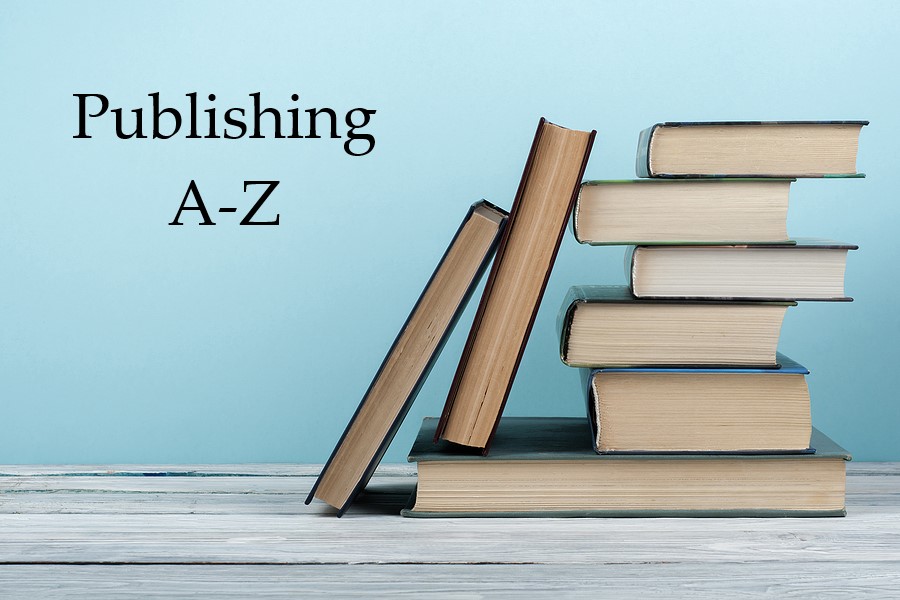Welcome back, friends. I’ve talked a lot about conflict, but I have a few more tips to offer; then I’m going to move on to story structure.
Here’s are a few more suggestions for how to deepen the conflict in your story.
Empathize with Your Antagonist
I’m sorry, what?? Empathize with him or her? Well, yes. Because think about it. Even antagonists believe they’re in the right. Even the villain believes he has a right to the money he’s embezzling. He can certainly justify it if his boss had undermined him in front of the president of the company at the last meeting. Right? Or if the insurance company denied coverage for a life-saving operation. Or …well, you get the idea.
But here’s a great example. Have you ever seen the movie John Q with Denzel Washington? I recommend you watch it. Then you’ll understand exactly what I mean when I say empathize with your antagonize. 😊 Understanding and exploring your bad guy’s motivations can make your story’s conflict more layered and less one-dimensional. And don’t forget, not all villains are all bad. Most villains have some redeeming qualities about them. Even serial killers love someone.
Allow for Breathing Room
While high-octane conflict is what your readers are looking for when they pick up a book, keep in mind that it can also be exhausting for them if they never get a break from it. It’s essential to have moments of respite, where characters and readers can regroup and pull themselves together for the next challenge that’s sure to come. This allows you to insert moments of humor, character bantering, and maybe even some reflection on all that’s happened. This ebb and flow can also make the peaks of conflict feel more intense—especially if the reflection is on what’s happened thus far and your character is waiting for the next shoe to drop.
For example: In my book Target Acquired (releasing August 2024), the opening scene is a SWAT team called to a hostage situation. For fifteen pages, the scene is tense, bullets are flying, people are yelling, hostages are terrified; but the team succeeds in taking the suspect down without any loss of life. One person is wounded. The heroine (Kenzie) is the Tac/SWAT Medic and the hero (Cole) is the Team Leader. Cowboy (another team/unit member) is wounded in the incident. The following text is part of the conversation that follows the high-octane conflict I mentioned above. Just for reference, Dolly is the name of the SWAT vehicle.
“Ambulance is outside,” Cole said to Cowboy. “Go get checked out.”
“Aw, man, I …”
“That’s an order.”
Cowboy snapped his lips shut and nodded. Then winced.
“You’d make me do the same if the roles were reversed,” Cole said, his voice softer.
“No I wouldn’t. I’d never treat you like that.” The whine in his voice was unmistakable and Cole smothered a laugh.
“Liar. Get out of here. You’re done until the doctor—or Kenzie—releases you.” He helped the man to his feet and noticed he swayed before catching his balance.
“Dizzy?” Kenzie asked.
“Uh, yeah, maybe. A little.”
She stepped up and gripped his arm. Cole caught the look she shot him and nodded. They weren’t going to let him walk out under his own power.
Once Cowboy was safely in the ambulance with two paramedics hovering over him, Cole looked at Kenzie. Beautiful Kenzie King who took his breath away and pulled all of his protective instincts to the surface. Instincts he had to stuff down into the deepest corners of his heart. “Good work.”
She flashed him a tight smile. “Thanks. I just gotta grab my stuff then I’ll be ready to roll.”
She hurried back inside the store and Cole turned to find James watching him. James Cross, his best friend and partner. A man who knew him better than just about anyone. “What?”
“Didn’t say anything.”
“Didn’t have to. What are you thinking?”
“What do you think I’m thinking?”
Cole scowled. “I don’t know, but you’re wrong.”
“If you don’t know what I’m thinking, how do you know I’m wrong?”
“Shut up.”
James’ low chuckles followed him all the way to Dolly.
So, let your characters and readers breathe—but only for a little bit. Then you can ramp up the conflict once more.
Yes, I’m using suspense examples mostly; but these techniques work for any genre.
Use Conflict As a Learning Curve
As part of their character arc, every challenge or confrontation should offer a lesson or growth opportunity for your characters. Just like in real life, when we’re confronted with something we have to deal with–whether it’s a physical ailment, an argument with our spouse, child, parent, best friend or boss–we usually walk away having learned something. Whether it’s keep my opinions to myself because the other person doesn’t really care what I think, or I’m really glad I brought up what was bothering me and cleared the air. In my books, the characters usually learn that they’re stronger than they thought they were. They learn forgiveness really does set us free. They learn boundaries are a good thing and can give us much freedom and mental stability. And more. All that to say, by the end of their journeys, your characters should have changed in some way, whether it’s their outlook on a certain life situation, beliefs—whether theologically or about themselves—or their very nature.
Side note: Usually, what your character learns by the end of the story is related to the theme of the book. So, once you decide what you want your character to learn, it’s rather easy to pick your theme. 😊 But I’ll talk more about that in a later post.
Reflect Real Emotions
Okay, this is a hard one. I don’t know about you, but I don’t always like to draw from real-life experiences and emotions. Unless we’re talking laughter and fun, of course. But pain, sorrow, and grief are definitely no fun to revisit. But authenticity can make your characters more relatable and their struggles more believable. I remember when I was writing the book Justice Mission. It was for a continuity series that Love Inspired Suspense does each year. I had book one, and I had to write the funeral of a fallen officer. Whew! Y’all (yes, I’m Southern), that was one of the absolute hardest things I’ve ever written. Why? Because I’ve lived it. I’ve stood at the graveside of a fallen officer whom I loved and listened to the dispatcher give that final call. Here’s part of the scene from that book:
Sophie’s gut twisted. She wasn’t ready for this part.
The final call.
Radio static sounded over the loudspeakers and a sob slipped from Katie’s lips. Sophie reached over to clasp her friend’s hand as dispatch came on.
“Central to Officer 75990.”
Silence. Waiting.
“Central to Officer 75990.”
More silence. More waiting for the answer that would never come again.
“Chief Jordan Jameson, please respond.”
Tears flowed freely now for Sophie. She simply couldn’t control them. Katie’s grip tightened.
“Chief Jameson,” dispatch said, “no response. Officer 75990, Jordan Jameson, is end of watch. He has gone home for the final time.”
A long, loud beep resembling that of a flatlining patient pierced the air. Gasping sobs came from all directions.
Then dispatch finished the End of Watch Call by saying, “Chief Jameson, the city of New York and the K-9 unit thank you for your service and your sacrifices. May you rest in peace with your eternal Savior. We will miss you.”
Sophie thought the dispatcher may have smothered a sob on the last word.
More radio static. More muffled sounds of grief.
Then a heavy, misery-laden silence surrounded them, pressing in on her. Sophie likened it to suffocating. Could one actually die from grief? She drew in a deep breath and used the tissues she finally remembered she had to wipe her cheeks.
The bagpipes broke into the stillness once more and the strands of “It Is Well with My Soul” nearly undid her.
Yeah, that was a hard one. But one reviewer said this:
“Especially affecting was the final radio call—I had heard about this, but reading it from a writer with Eason’s skill made it haunting and sorrowful. The page seemed to cry.”
I’m okay with a crying page. 😊
Be Fearless
Lastly, don’t shy away from pushing boundaries. Sometimes, the most profound conflicts arise when we venture into uncharted territories, both in our storytelling and in the challenges we set for our characters. Now, I don’t mean push publisher boundaries; but don’t be afraid to address tough topics. Readers want them.
So, in summary, embrace the chaos! LOL. It’s the stories with the most satisfyingly resolved conflict that readers remember in the years to come.
What are some of your favorite stories—classics or contemporary—that have stuck with you the most and why?



 E Is for Editor
E Is for Editor

In a dappled quiet glade
in a place way south of here
stands a small cross that I made
to mark a grave that holds a tear
that I had shed, unwanted,
hallmark of heart’s slavery
that betrayed my vaunted
hardass mien and bravery.
I buried all that I had found
and had, in haste, to leave the rest
to the coolness of the ground
that always waits to claim our best
that fell for a bright noble goal
of a nation that misplaced its soul.
I envy your ability to write these so often and quickly!!!
Jeannie, thank you!
This is helpful. Thanks Lynette!
Thank you for sharing your insight and experiences with writing conflict.
Hi Lynette,
This post is rich. You certainly delve into several tactics that will help advance our writing, plunging readers deeper into the storyline because we give them reason to connect. I’ll be applying these lessons to my current WIP as I work through edits.
I have to address the grief that you mention, and how writing through a tragedy that we’ve experienced can make it that much more real and heartfelt. I have had a scene in each of my published novels that proved difficult to write because I’ve experienced that pain (either directly or indirectly). However, I’ve found my readers connected with those gruesome scenes (likely) because I wrote them from a testimonial stance. I tend to write from real experience (perhaps a bit opposed to you)…and I find that writing through those difficult scenes as I create a fictional spin on reality helps me heal from the pain enveloped within the confines of the actual experience. My first novel is riddled with these conflict scenes (which meant that I had to incorporate intentional relief for the reader to have a bit of a break). My second novel unravels pain experienced indirectly, so naturally there’s a curve to the intensity (or maybe that’s just my personal response). But the real conundrum might be how I balance the intensity of child molestation with appropriate moments of relief within my WIP.
I’m hoping to get some feedback on that soon…all this to be said, I appreciate your insight and your personal examples on this topic of conflict, and I’m looking forward to your post(s) on theme!
Such great information as you always provide. Thanks so much!
The last call scene sucker punched me. I wasn’t expecting emotions to rise. I’ve experienced that first hand and everything came back.
Thank you for showing the power in a well written scene centered around heavy emotion.
Great post–lots to think about. 🙂
The stories that stick with me most are those that address true-to-life situations and point to Jesus as our hope and redemption. I love deep themes with a spiritual challenge. Thanks for your helpful post, Lynette!